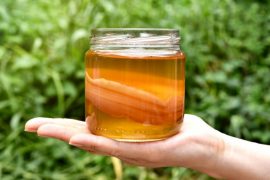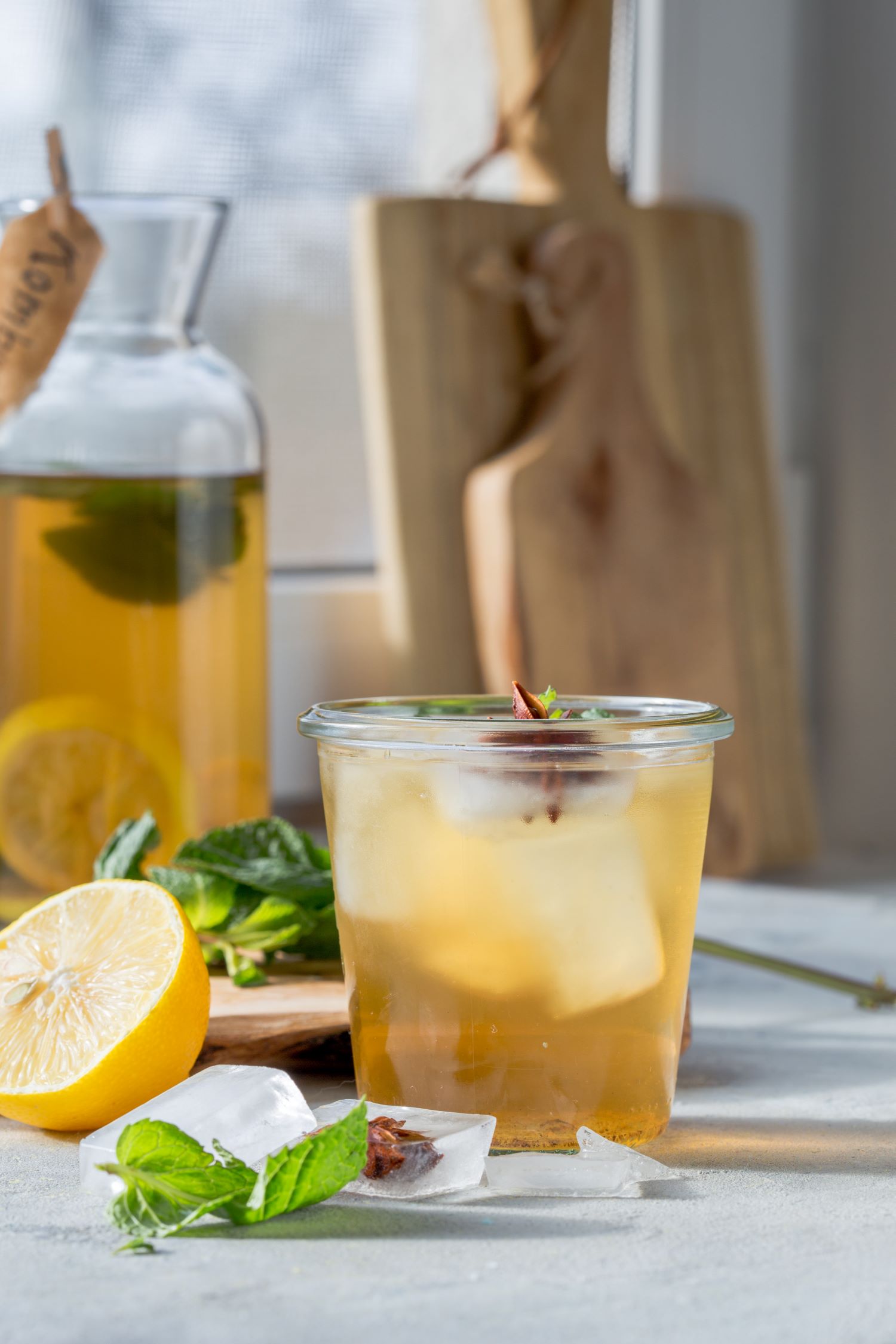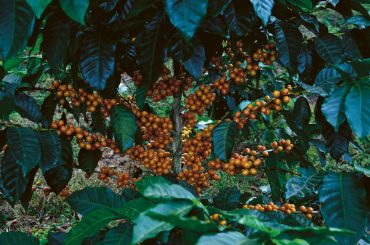Kombucha, also known as tea mushroom which is no mushroom at all, is a kind of a symbiotic colony of yeasts and bacteria. And despite the fact that yeasts are part of the fungus kingdom, kombucha is definitely much more complex.
How Is Kombucha Made?
The tea mushroom itself resembles a jellyfish or a ‘milk skin’ as it floats freely atop the tea or fruit infusion. Sugar-assisted fermentation results in a slightly fizzy, acidic and refreshing drink with a very positive effect on the human body. The infusion provides many valuable vitamins from group B and C and organic acids, such as acetic, lactic and malic acids. Moreover, it contains zinc, magnesium and iron. It is beneficial to intestinal flora, supports the work of the whole digestive system, liver and kidneys.

Where Does Kombucha Come From?
The story of kombucha dates probably back to the 2nd century. In China of that time it was called ‘the elixir of eternal life’ or ‘the tea of immortality’. Over time, tea mushroom got to Japan, where it gained the greatest fame. It came there with a Korean doctor who wanted to treat the digestive problems of the emperor who reigned in the Kofun period.

Kombucha vs the Polish Tradition of Pickling
Kombucha came to Poland probably with tea. It didn’t win over Western Europe (because of their scepticism towards fermented products as exhibiting signs of spoiling), our region already knew pickled cucumbers, sour cabbage or bread drink, so it also took in kombucha and called it tea mushroom.

The End of Popularity of the Fermented Drink?
Kombucha’s popularity goes back a long time. It was drunk in the Polish homes in the 1950s until the late 1970s. One neighbour passed the tea mushroom to another neighbour, and so on… until the little-known in this part of Europe company entered the market with a ready-to-drink fizzy beverage called Coca-Cola. This rapidly affected the popularity of tea mushroom, which, as a result, disappeared from Polish cuisine for about half a century.
Luckily, for a few years kombucha has been successful again. The ready-to-drink beverage is available in almost every shop where, step by step, it is replacing highly sweetened drinks.





